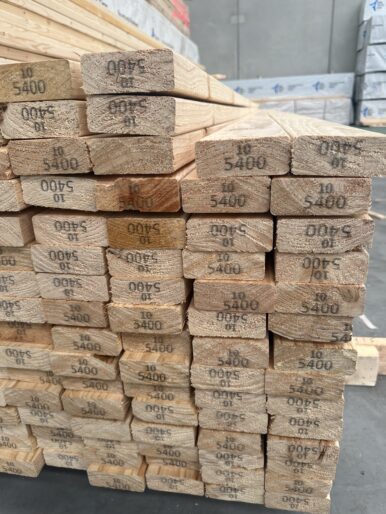- Your cart is empty
- Continue Shopping
Storing MGP10 Timber Wrong? It Could Be Costing You More Than You Think
Think about how you treat your tools. You keep them clean, protected, and stored properly because they’re valuable, they help you work efficiently, and replacing them isn’t cheap.
Now, consider your MGP10 timber. Is it getting the same level of care? Or is it sitting on the edge of the site, exposed to the elements and left to fend for itself?
The truth is, your timber is just as important to the success of the job as your tools. And if you wouldn’t leave your gear in the rain, it makes sense not to leave your timber there either.
So, What’s the Real Problem?
MGP10 is known for being strong, versatile, and reliable. That’s exactly why it’s a popular choice for structural framing, trusses, and other key components in residential and commercial builds across Australia.
But even the best timber won’t perform if it’s not stored and handled correctly.
At the end of the day, timber is still a natural product. Even when kiln-dried and machine-graded, it can absorb moisture or shift in shape if left in poor conditions. That puts your job at risk, and no one wants to be the one explaining to a client why a wall isn’t square or a frame isn’t lining up.
What Happens When It’s Stored Poorly?
Here’s what typically goes wrong:
- Stacked directly on the ground? Ground moisture will creep in, no question.
- Left uncovered on site? After a few days of weather, it could be bowed, split, or unusable.
- Heavy materials placed on top? That’ll ruin straight lengths faster than you think.
What makes it worse is that you often don’t notice the damage right away. It shows up when it’s too late, when frames don’t align or cuts don’t sit properly. Then you’re looking at rework, delays, extra costs, and a frustrated crew.
So, What’s the Right Way to Store MGP10?
Proper storage isn’t complicated. It just takes a bit of planning and consistency.
Here’s what to keep in mind:
- Raise it off the ground. Use bearers, blocks, or pallets. This allows airflow and keeps it dry.
- Cover it properly. Use a tarp, plastic sheet, or store it under cover. Protection from the sun and rain is key.
- Keep it level and supported. Stack timber on a flat, even base with regular support. This prevents sagging and twisting.
- Let it breathe. Don’t wrap it too tightly. Moisture needs to escape, not get trapped.
- Store it dry. If it’s wet when delivered, give it time to dry out before installation.
These steps might take a few extra minutes at drop-off, but they’ll save hours down the track.
“It’ll Be Fine” Isn’t Good Enough
It’s easy to fall into the mindset of “it’s just timber, it’ll be right.” But that kind of thinking leads to costly mistakes.
You wouldn’t install warped studs or trusses that don’t sit flush. Not if you’re aiming to get the job done properly. And if you’re running a crew, you don’t want them wasting time fixing avoidable issues.


A Small Effort Now Prevents Big Problems Later
Spending fifteen minutes to store timber properly can prevent several hours of rework and frustration. That’s the difference between finishing on time and being stuck late fixing what could’ve been avoided.
More than that, your reputation’s on the line. Taking shortcuts might save time today but they can cost you a lot more tomorrow.
The Bottom Line
MGP10 timber performs at its best when it’s stored and handled the right way.
Keep it off the ground, keep it dry, and give it proper support. Do that, and you’ll get the structural performance and reliability you expect, every time.
Ignore it, and you could be dealing with wasted materials, delays, and added costs.
Looking for reliable MGP10 timber for your next job?
At Timber Central, we supply MGP10 structural pine to builders who value quality and consistency. We work with professionals who care about doing things right, just like you.
Get in touch with Timber Central today to secure reliable, high-quality MGP10 for your next project.
Get it straight. Keep it strong. Do it right from the start.


